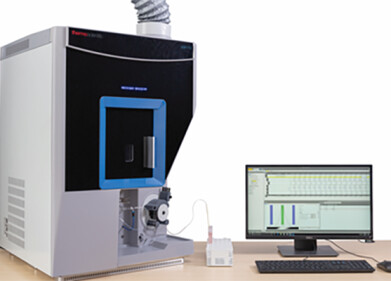Mass Spectrometry & Spectroscopy
What is Good Bacteria in Food?
May 13 2022
Bacteria harbours a negative reputation however these live microorganisms aren’t always a bad thing. Probiotics, also known as “good” bacteria, actively work to support the immune system, fight off infections and balance gut microbiota. Below, we take a closer look at good bacteria in food and how certain strains contribute to a healthy, happy body.
The all-important role of probiotics
Every human body has a unique microbiome made up of good and bad bacteria. When an infection is contracted, bad bacteria multiply and throw the immune system off balance. When this occurs, good bacteria step up to eliminate these harmful strains and restore the body’s natural balance.
Understanding the microbiome
Every human body is made up of trillions of microbes. This miniature ecosystem is known as the microbiome and includes bacteria, as well as fungi, yeasts, viruses and protozoa. No two humans have the same microbiome, meaning there are billions of different variations out there.
Meet Lactobacillus and Bifidobacterium
Lactobacillus and Bifidobacterium are the most common types of probiotics and are considered living microorganisms. Both are made up of multiple strains of “good” bacteria and tick all the boxes required of a probiotic. This includes:
- Being isolated from a human body
- The ability to survive in the intestine after being consumed
- Offering a proven health benefit
- Safe for human consumption
The perks of good bacteria
There’s plenty of scientific research to support the benefits of good bacteria. Some of the most well-advertised perks include:
- Supporting immune function
- Reducing inflammation
- Aiding digestion of food
- Preventing outbreaks of bad bacteria
- Supplying the body with essential vitamins
- Supporting cells in the gut
- Breaking down and absorbing medications
Probiotics in food
Good bacteria occur naturally in the body. That said, many foods are loaded with probiotics that can be consumed to top up levels of beneficial microbes. Foods that contain live and active cultures, such as yogurt, are a great source of probiotics. Sourdough bread is packed with probiotics, with foods such as cottage cheese, tempeh, fermented pickles and miso soup also excellent for microbiome health.
Kimchi, a type of fermented cabbage popular in Korea, is rich in a bacteria called Lactobacillus kimchi, which supports digestive health. Kombucha is another food source with probiotic properties, with the fermentation process powered by good bacteria.
Consuming good bacteria in food is a terrific way to boost the microbiome. However, many people choose to supplement with pills, powders, liquids and other sources. Analytical techniques such as NMR Spectroscopy play an important role in helping scientists develop these supplements and harness the benefits of good bacteria. Sometimes supplements are paired with a prebiotic, which contains complex carbohydrates that feed good bacteria in the gut and support growth.
Want to know more about bacteria in food. We cover the good and the bad, including common causes of foodborne illness such as Salmonella, E. coli and Campylobacter, in our complete guide: ‘Bacteria in Food - Types, Testing & Problems’.
Digital Edition
Lab Asia 31.2 April 2024
April 2024
In This Edition Chromatography Articles - Approaches to troubleshooting an SPE method for the analysis of oligonucleotides (pt i) - High-precision liquid flow processes demand full fluidic c...
View all digital editions
Events
InformEx Zone at CPhl North America
May 07 2024 Pennsylvania, PA, USA
May 14 2024 Oklahoma City, OK, USA
May 15 2024 Birmingham, UK
May 21 2024 Lagos, Nigeria
May 22 2024 Basel, Switzerland







.jpg)










